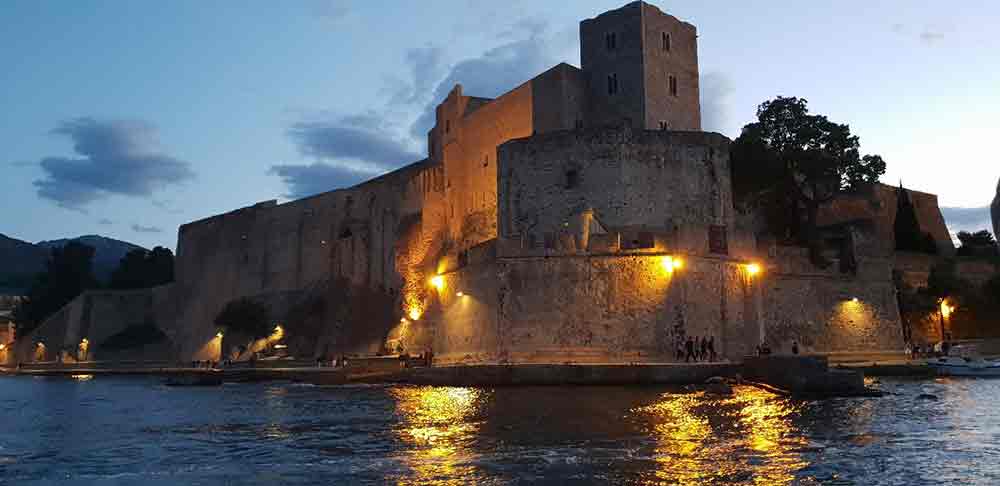
Collioure, a town of artists...
Collioure has been an art Mecca since the 19th century.
A Catalan artist, Marc André 2 Figueres, developed a passion for funnels, one of which once dominated Collioure and is now installed in the Museum of Natural History in Perpignan.
In various places in Collioure, Marc André 2 Figueres installed empty frames, and all you had to do was admire the image you saw through the frame.
You can also read the artist's book “La théorie érotique du clocher de Collioure” on the beach.
Collioure, a town of artists, but also an economic town.
Throughout the 19th century, the town enjoyed a major economic boom thanks to the expansion of fishing, with the success of Collioure anchovies, and wine production.
At the beginning of the 20th century, Collioure underwent an essential turning point, which would greatly contribute to its development as a tourist destination.
It was in 1905 that Henri Matisse came to paint in Collioure, where, in the company of André Derain, he created Fauvism.
Other painters would follow, including Albert Marquet, Juan Gris, Georges Braque, Picasso, Raoul Dufy, Foujita, Othon Friesz, Paul Signac...
A heritage worth seeing...
Collioure has a rich heritage. First of all, the Chapelle Saint-Vincent (1642), a chapel built on a schist rock at the end of the Collioure cove. Then there's Saint Nicolas du cimetière (1558) and Saint-Sébastien de la Punta (1528), not to mention the many oratories scattered around the town.
There's also a former Dominican convent dating from the 14th and 15th centuries, whose church is a listed monument with a single nave and chapels between the buttresses.
The church still has vestiges of its 13th-century cloister, which was sold in 1938 and has now been converted into a cooperative wine cellar, the Cellier des Dominicains.
Eleven of the cloister's arcades were bought back by the commune and reinstalled in the Parc Pams garden in 1993.)
Notre-Dame de Consolation is a hermitage located a few kilometers inland.
Collioure is also famous for the church of Notre Dame des Anges.
Military architecture is also well represented: Fort Saint-Elme dominates the town and that of Port-Vendres; the Château Royal, of course; Fort du Miradou, the result of Saint-Hilaire's 1674 transformation of an ancient medieval castle; the Tour de la Douane (14th century); and the 14th-century Tour de la Madeloch.
On the Pla de “les Forques”, above Collioure, an exceptional complex of Fort Rond and Fort Carré was built between 1726 and 1770. Its role was to protect the existing fortifications, which had become less effective with advances in ballistics. The Fort Carré, with its star tower and covered walkway, remains as it was built in 1758, then modified in 1824. It has been listed since February 11, 1991.
Nor should we forget a rich civil heritage, including the village streets. The Moulin de Collioure (Collioure mill) is also a work of art straight from the Middle Ages. It is still in use today, and a plaque at its feet tells its story.
Collioure Tourist Office
Place du 18 Juin, 66190 Collioure
Tel.: 04 68 82 15 47
www.collioure.com
Translated with DeepL.com
(free version)





